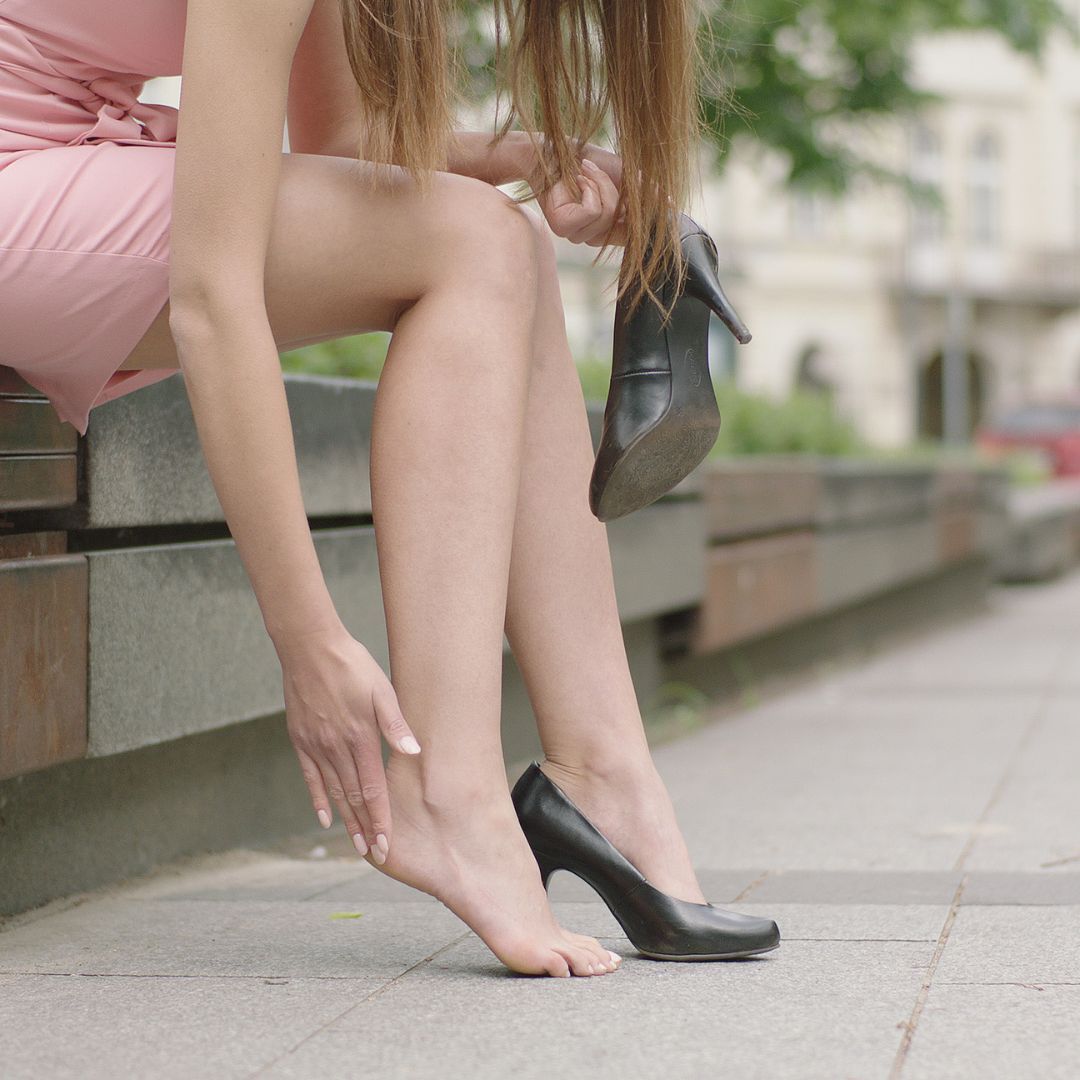Klarna payments now available
OUR BLOG
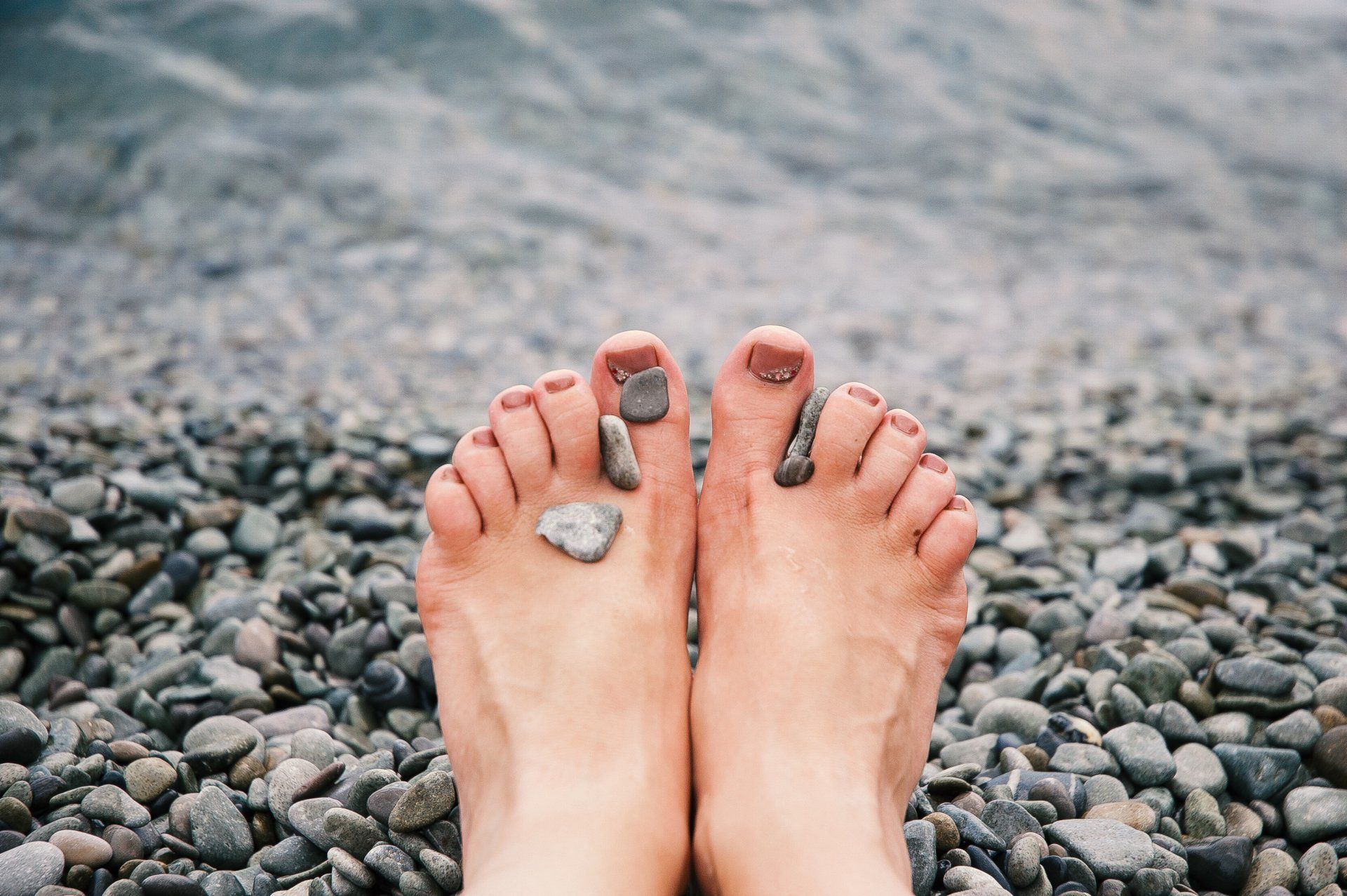
by Sarah
•
15 Nov, 2023
Many people experience foot and ankle pain as the result of a sports injury or because they are wearing shoes that can be damaging to their feet. However, for some people, foot and ankle pain is simply a result of the ageing process and health conditions. Osteoarthritis is a common cause of foot and ankle pain. Read on to learn more about osteoarthritis of the foot and ankle. What Is Osteoarthritis? Osteoarthritis is a disease that commonly sets in as a person ages. It involves the wearing down of cartilage in the body’s joints. Cartilage is a type of connective tissue that is located at the joints at the end of the bones. It acts as a sort of cushion between bones when they move. Without cartilage, your bones would rub directly against each other when you walk, run, or move. When osteoarthritis sets in, that cartilage begins to wear away, and your body loses some of the padding that it used to have between bones. Osteoarthritis is the most common form of arthritis, and is sometimes known as degenerative arthritis or, simply, arthritis. It often accompanies the process of ageing. Osteoarthritis can affect many different joints throughout the body, including the feet and ankles. Causes of Osteoarthritis Most of the time, osteoarthritis is caused by the natural process of ageing. As we get older, our daily activities put some wear and tear on our bones and joints. The stress of using our bodies makes the cartilage wear down; it gets thinner and starts to deteriorate. Eventually, the bones can begin to rub together. This process causes pain and inflammation in the joints. Injuries can cause osteoarthritis to develop, as well. When osteoarthritis is caused by an injury, the osteoarthritis doesn’t set in immediately. For example, you might injure your foot, and months or years later, begin to experience the symptoms of osteoarthritis. The shape of the foot can also lead to the development of osteoarthritis. If you have flat feet or high arches, it can cause extra strain on your feet. This strain can develop into osteoarthritis. Symptoms of Osteoarthritis There are a few symptoms that are common to people with osteoarthritis. A person typically experiences joint pain, joint stiffness, swelling of the joint, and difficulty bending the joint. In some cases, bone spurs may develop on the affected joint, which can further inhibit movement of the joint. Coping with Osteoarthritis of the Foot and Ankle People tend to assume that osteoarthritis is a natural part of ageing and that there is nothing that can be done about it. Fortunately, that is not true. There are several things that you can do to cope with osteoarthritis of the foot and ankle so that you can retain your mobility and manage pain. If you have (or think you might have) osteoarthritis of the foot or ankle, you should see your doctor. He/She can diagnose you and make recommendations as to the proper course of treatment, which could include anti-inflammatory medication, steroid injections, or physical therapy. Many people who have osteoarthritis of the foot or ankle find relief through the use of orthotic devices . Orthotic devices are customized inserts that are worn inside your shoes. They gave your feet extra support exactly where you need it. If you have osteoarthritis or bone spurs in your feet, orthotic devices can make it much more comfortable to spend time on your feet. Don’t let osteoarthritis limit you.

by Sarah
•
08 Nov, 2023
Plantar fasciitis is a medical condition in which the plantar fascia becomes inflamed. The plantar fascia is the band of tissue that runs along the bottom of the foot and connects the heels to the toes; it is what forms the arch of the foot. The pain associated with plantar fasciitis tends to be worst when you first get up in the morning or after any extended period of rest. If you have plantar fasciitis, it may seem like it would be impossible to exercise without experiencing pain. However, there are ways that you can exercise without suffering. In fact, exercise is good for plantar fasciitis, particularly if weight gain has contributed to your development of plantar fasciitis. Read on to learn more about the best exercise strategies for people with plantar fasciitis. Before you get started, make sure that you are wearing supportive shoes. If you have plantar fasciitis, it may be beneficial for you to wear orthotic devices (custom arch supports) with your exercise shoes. These devices are custom made to fit your feet and provide extra support to the arch of the foot. Talk to your doctor about whether orthotic devics could be beneficial for you. Avoid high impact activities. If you are having an acute flare-up of plantar fasciitis symptoms, then it is best to avoid high impact activities like running or jumping that will put more strain on the already inflamed plantar fascia. Instead, opt for gentler exercises, such as cycling, swimming, or yoga. Start by stretching. If you are having pain, try stretching the feet gently. Wrap a towel around the bottom of your foot and stretch your leg out in front of you. Gently pull on the towel to stretch the plantar fascia, and hold that position for about 30 seconds. Repeat three times on each side. Stretch the calf by standing within arm’s reach of a wall or countertop. Place your hands against the wall, and bring one leg slightly forward while stretching the other leg out behind you. Bend the knee of the front leg, keeping your heels on the floor, until you feel a stretch in the calf of the back leg. Hold this pose for 30 seconds, and repeat three times on each side. Sit in a chair and fold one foot across the opposite knee. Use your hand to pull your toes backward, toward your shin, until you feel a stretch in the arch of your foot. Hold for ten seconds, and repeat on the opposite side. You can use a frozen bottle. Soothe sore feet by rolling a cold or frozen bottle of water under the arch of the foot while you are seated in a chair. A golf ball or tennis ball rolled under the feet is comforting, as well. Wear supportive shoes when you’re exercising, and even when you’re not exercising. If you wear comfortable shoes and orthotics when you exercise, that’s great – but you’re only halfway there. You should wear supportive shoes all the time. If you wear flip-flops (or any other non-supportive shoe) the rest of the day, then you are setting back the healing process. Give your feet the support that they need all the time. You can continue to exercise with plantar fasciitis, as long as you are careful about how you do it.
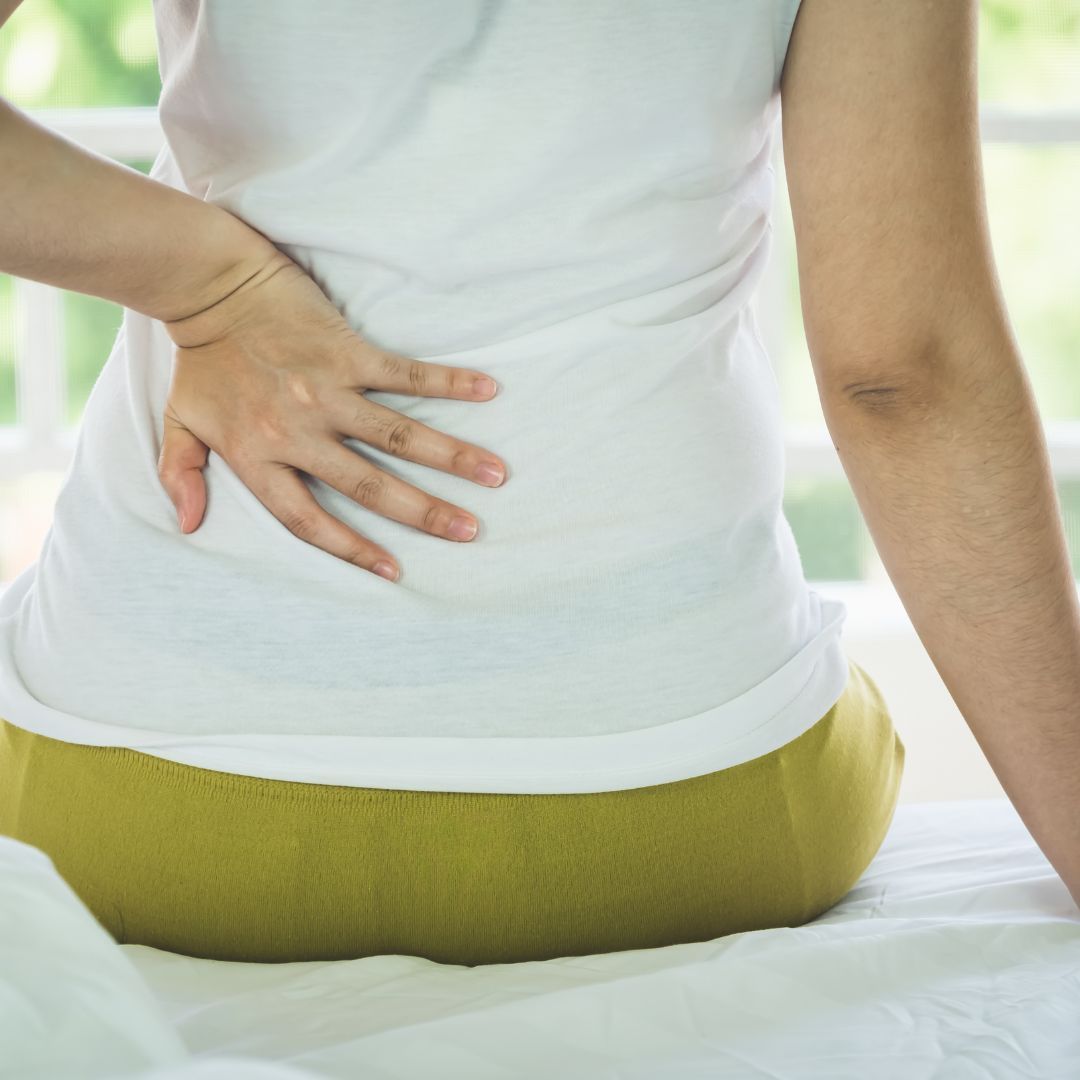
by James
•
08 Jun, 2023
Do you have back pain ? Have you tried home remedies, like stretches and back braces? You may be surprised to learn that your back pain could actually be caused by your feet . Our feet act as a support for the entire body. If your feet are out of alignment or aren’t getting the appropriate support , you can experience pain from your feet all the way up through your knees, hips, and back . Take note of when your back pain occurs. Do you find that your back pain is worst while you are standing, walking, or running? This can be an indication that your back pain is related to a gait abnormality or the way that your shoes fit . When your feet aren’t getting the support that they need , they have to work extra hard to stabilize your body. This can lead to pain all over the place. If you have back pain , changing your shoes may bring you significant relief . Read on to learn more about how you can choose the right shoes for back pain . Get a Gait Analysis Your gait is, quite simply, the way that you walk . Do you walk on the insides of your foot , or the outsides of your foot ? Take a look at the bottoms of your shoes . Where are they most heavily worn? If your shoes are more worn on the outer edges of the foot , then this is an indication that you underpronate. (This is also known as supination.) This means that when you walk , you place most of your body weight on the outside edge of your foot , which causes your foot to roll outward when you walk . Underpronating can lead to back, hip, knee, and ankle pain. If your shoes are more worn on the inside of the foot , then you probably overpronate. This means that are probably over-pronating , which is putting the majority of your body weight on the inside of your feet . This forces the feet to roll inward. Overpronating is hard on the arches of your feet ; it can strain them and lead to fallen arches . As a result, overpronators can experience back and joint pain . The middle ground is known as neutral pronation . If your shoes are pretty evenly worn on the bottom, then you may be a neutral pronator. This is a healthy and well-balanced gait. Improve Your Posture If you have an abnormal gait, you may also have poor posture . When the gait is abnormal, we may stoop or lean in an unconscious effort to correct it. You can improve your posture and help to relieve back pain by being more mindful of your posture. Focus on walking with your shoulders back and your back slightly arched. Wearing supportive shoes with orthotic inserts or arch supports can do a great deal to relieve back pain . If you have back pain , don’t ignore it.
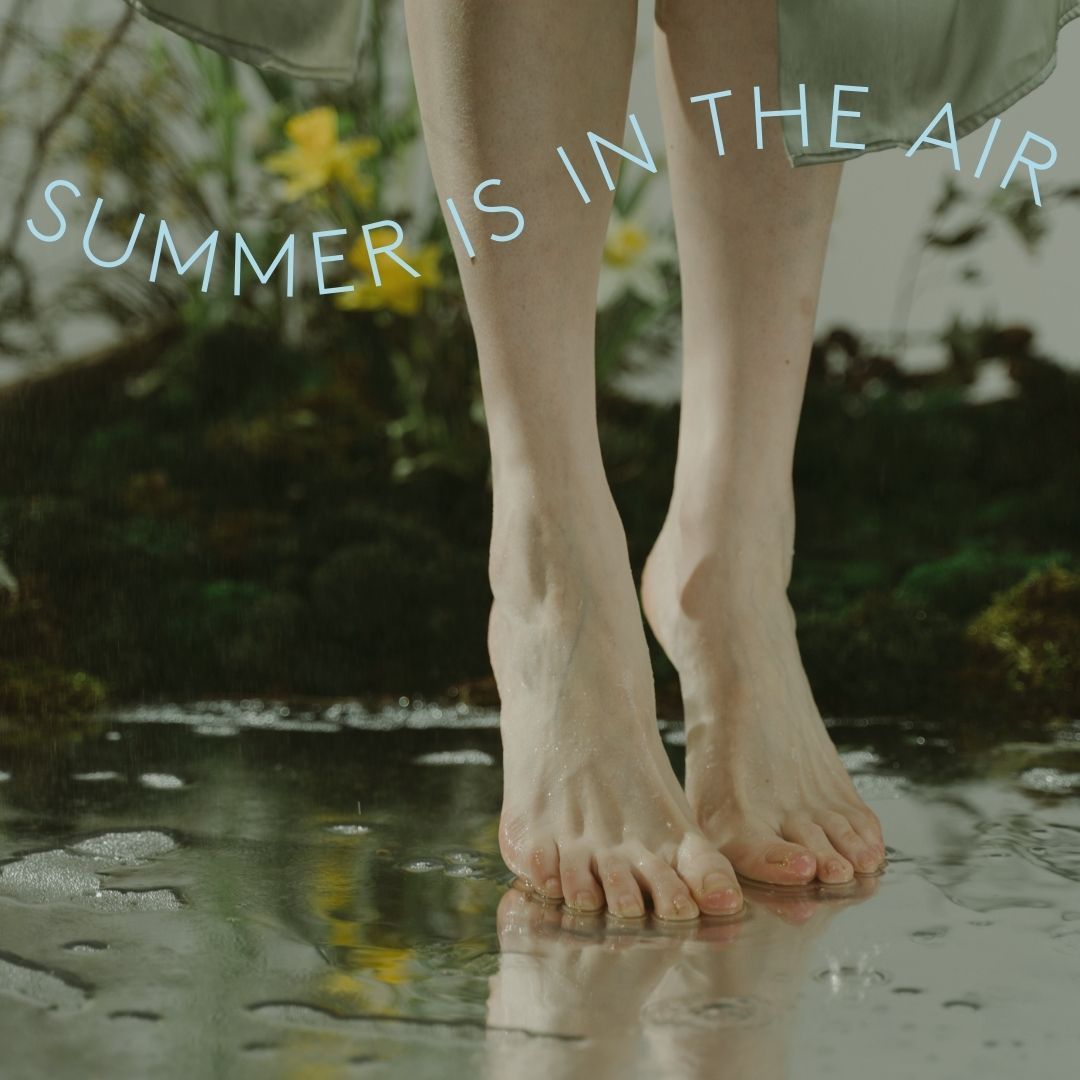
by James
•
24 May, 2023
Do you have calluses on your feet ? Do you wonder how they got there? There are a number of factors that can cause calluses to develop. Read on to learn more about what causes calluses and how you can cope with them. About Calluses A callus is a thick, hard area of skin. Calluses develop when your body reacts to friction or pressure and develops new layers of skin to protect itself. Typically, calluses are not a significant problem; many people have them without experiencing any problems or symptoms. Calluses only require further care or concern if they cause pain or if you are at risk of complications due to diabetes. Causes of Calluses Wearing shoes that don’t fit properly can cause calluses . Shoes that are too tight, too narrow, or have high heels can put pressure on the feet. As a result of this pressure on the feet , calluses can develop. Wearing shoes that are too big can actually be just as harmful as wearing shoes that are too tight . When your shoes are too loose, your feet can move around inside the shoes , which results in friction between the foot and the shoe . This friction can also cause calluses. Risk Factors for Calluses You are more likely to develop calluses if you have other foot conditions, such as bunions, hammertoes, or bone spurs . Wearing shoes that don’t fit properly and wearing shoes without socks also contributes to the development of calluses. If you have calluses on your feet, you could probably benefit from a new pair of shoes & an arch support . We have a wide variety of comfortable and attractive shoes for you to try.
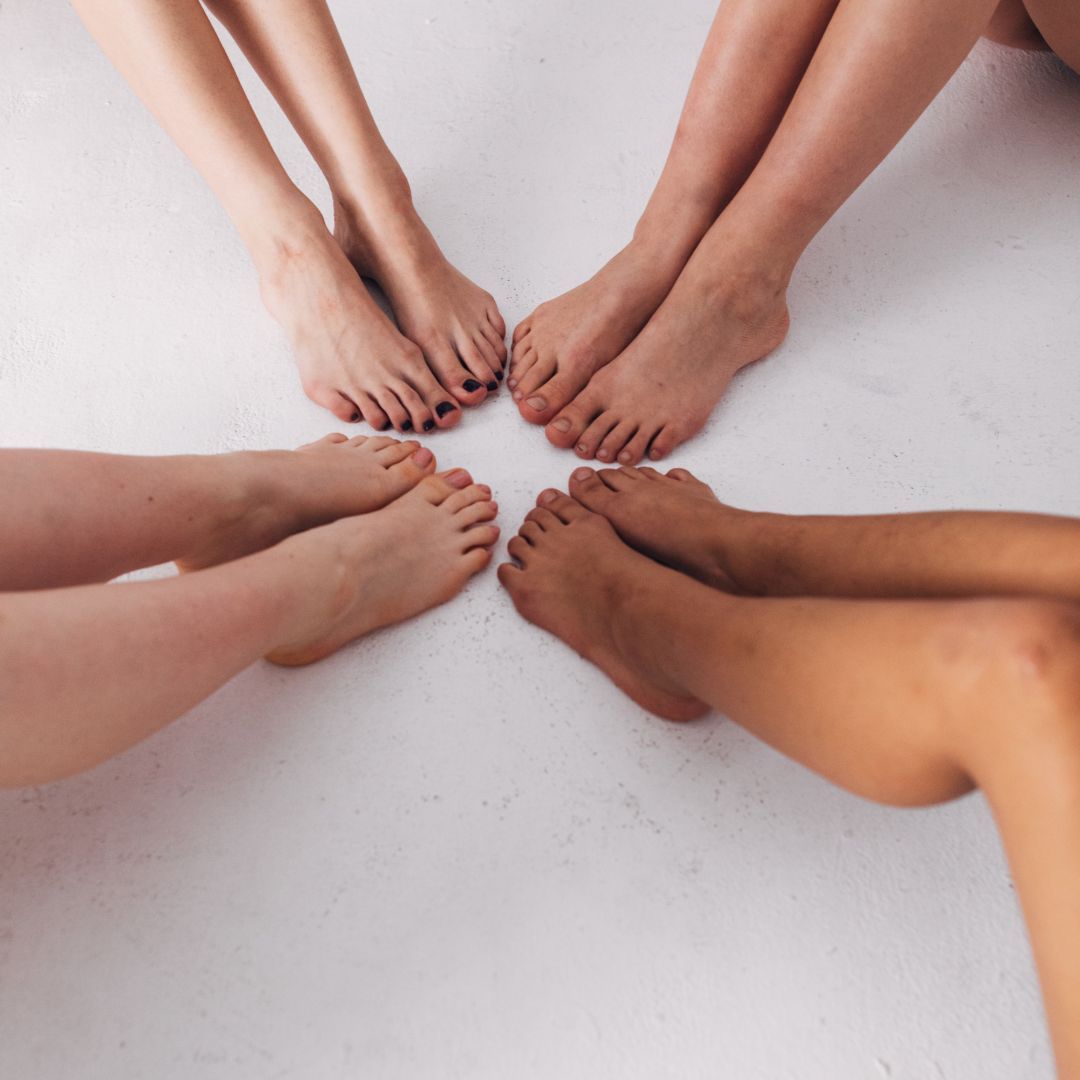
by James
•
25 Apr, 2023
At the end of each day, are your feet sore and achy? Do you count down the minutes until you can get home and take your shoes off and fall into bed? Daily foot pain is not normal! You don’t have to live with constant foot pain , even if you spend a lot of time on your feet. You can and should feel comfortable , no matter how much time you spend on your feet . If you continuously have foot pain , you are probably wearing the wrong shoes . When your shoes don’t give you the support that they need, your feet will hurt. Your ankles, knees, hips, and back may hurt, too. Continuing to wear shoes that don’t fit properly or don’t provide adequate support can result in a variety of foot problems, such as bunions, hammertoes, calluses, and joint pain. Fortunately, the solution is easy. You just need orthopaedic shoes for women. First, you need to get your feet measured . Go into a specialized shoe store, and get your feet measured by the professionals there. We tend to pick out the size that we have been wearing our whole lives, and we don’t pay much attention to whether that size actually fits our feet properly. Our feet do tend to change size over time, even if you are well beyond a childhood growth spurt. This can equate to a difference in shoe size of one or two full sizes after reaching adulthood. As we get older, the arches in our feet lose their elasticity, which allows the feet to elongate. If you keep wearing the same size shoes , your feet will be crammed into shoes that are too small. This can lead to pain and all kinds of problems, including bunions and hammer toes. Have both of your feet measured at least once a year. It is not uncommon for the feet to be two different sizes. If your feet are different sizes , you should purchase a pair that fits the larger foot. Be sure to shop at a shoe store that specializes in orthopaedic shoes for women. Most shoe stores and department stores only offer a small selection of sizes and styles . A shoe store that specializes in orthopaedic shoes for women will have a much larger variety of sizes , widths, and styles. They will also have shoes that are higher in quality and provide more support. Never purchase a pair of shoes that hurt your feet. If your feet hurt , keep shopping for a different pair of shoes that feels good . Orthopaedic shoes are made differently than regular shoes. They specially designed to give you additional firmness in the arch of the foot, as well as extra heel support and more cushion for the feet. As a result, the shoes will feel more comfortable . They’ll also help to provide you with a more stable and balanced foundation. When your shoes don’t fit properly, they don’t only make your feet hurt. They deprive you of the strong and balanced foundation that you need to protect all of your joints. Some people find that no matter how many pairs of shoes they try on, they never get quite the right fit . If that is true for you, then you may need to add orthotic inserts to your shoes. For many people, the extra customization provided by orthotic inserts gives them the perfect fit that they have been looking for.
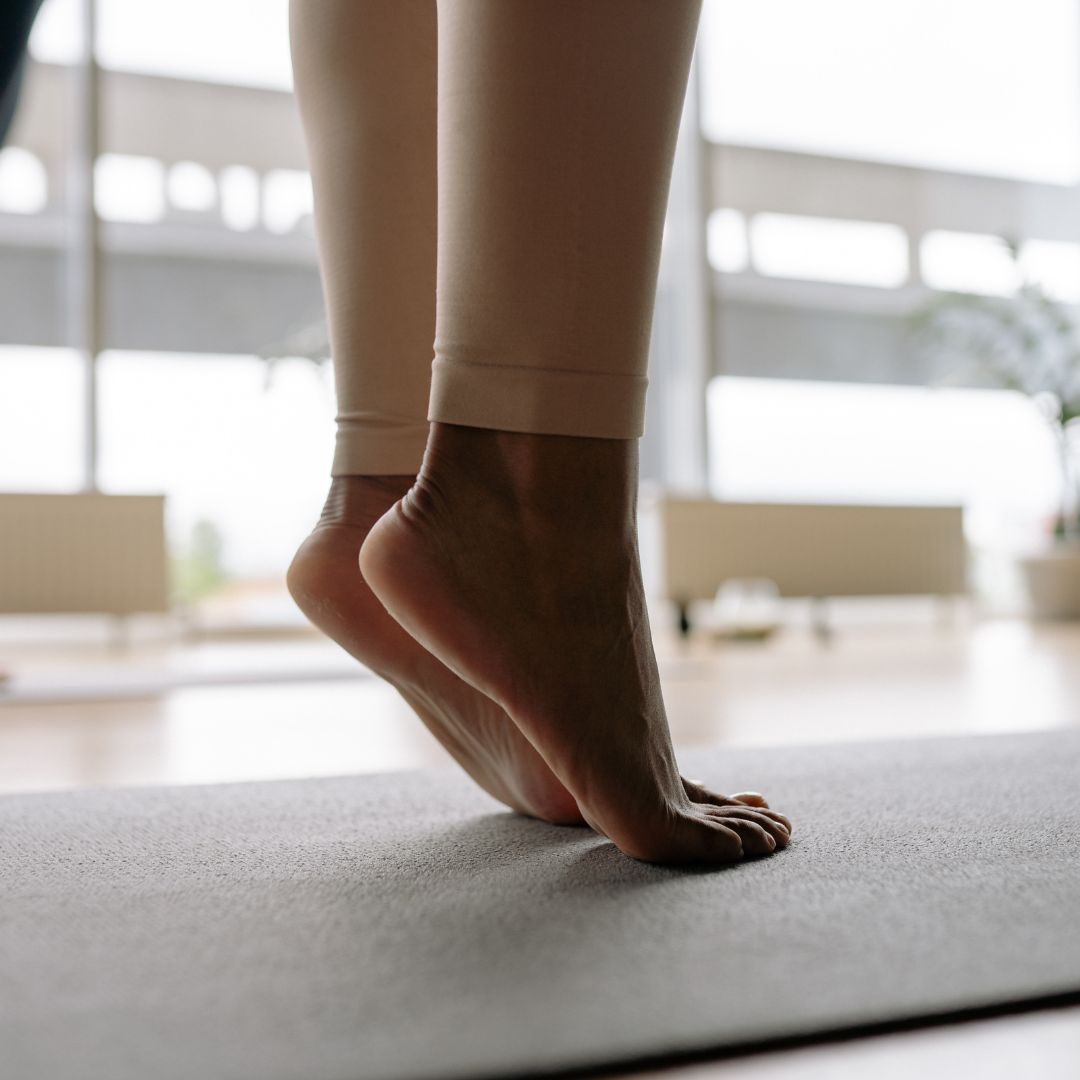
by James
•
11 Apr, 2023
There are a few different types of toe problems that can make it uncomfortable to spend very much time on your feet . If you have a toe problem , then you may need to give your feet a little bit of special care to keep them comfy. In general, there are a few things that you can do to keep your toes in top-top shape . Wash your feet daily. Sweat breeds bacteria, so wash your feet with soap and water and dry them thoroughly. This will help to prevent fungus like Athlete’s Foot . Keep your toenails clean and trimmed. If your toenails extend beyond the tip of your toe , they can rub against the edge of your shoe. This can encourage the development of ingrown toenails. Trimming the toenails straight across, not at an angle, will also help to prevent ingrown toenails . Wear footwear that is weather-appropriate . When it is hot outside, your feet need to breathe, so choose ventilated shoes or supportive sandals . When it is cold outside, stick with shoes that are waterproof and warm so that your feet stay warm and dry. Types of Toe Problems Hammer Toe and Mallet Toe Hammer toe is a toe problem that often affects women who frequently wear high-heeled or narrow shoes . These types of shoes tend to put pressure on the toe s and shove them toward the front of the shoe , which forces the middle joint of the toes to curl into an unnatural position. You are also more prone to developing hammer toe if you have previously fractured a toe or if you have nerve damage in your toes. This condition can also occur in the top joint of the toes (nearest the toenail), in which case it is called mallet toe . If you have hammer toe or mallet toe , there will be a visible bend in the joint of the toe . At first, the toes may only appear curled when you first take off your shoes . Over time, though, that curled position can become permanent. The toes that are affected may be painful. Hammer toe and mallet toe can also lead to the development of corns or calluses, because the affected toes tend to rub against the inside of the shoes . Women are more likely to develop hammer toe than men, and a woman’s risk of developing hammer toe increases with age. You are also at a greater risk of developing hammer toe if your second toe is longer than your big toe. If you suspect that you have hammer toe , you should see your doctor. The doctor will perform an exam and may also order x-rays. If you have hammer toe , you should right away switch to wearing shoes that are roomier and more comfortable. Your doctor might also recommend that you wear orthotic devices in your shoes . You can stretch and strengthen your toes by doing some home exercises. Try picking a towel or marbles up off the floor using only your toes . Bunions and Bunionettes A bunion is an abnormal growth of bone on the toe . A bunion occurs near the base of the big toe , at the joint. Bunions can also develop on the small toe, in which case they are known as bunionettes . A bunion tends to make the big toe appear crooked, like it is pointing toward the smaller toes. Bunions usually develop as the result of the big toe being crowded. Narrow shoes can squeeze the toes , bending the joint of the big toe in the wrong direction. This position actually makes the joint become enlarged , which exacerbates the problem and creates further crowding of the smaller toes . A bunion looks like a lump on the side of the big toe . The skin may be red and calloused. Bunions can be fairly painful, particularly when a person is wearing shoes or being active . Removing the shoes and resting the foot typically relieves the pain. In some cases, though, the pain may become chronic, particularly if a person has complicating factors, such as arthritis . If you suspect that you have a bunion, you should see your doctor. The doctor will examine you and possibly order x-rays. You should stop wearing narrow shoes or high heels right away. Switch to roomy, comfortable, and supportive shoes . Your doctor may advise you to wear orthotic devices with your shoes, as well.

by James
•
28 Mar, 2023
Metatarsalgia is a fancy way of saying that your feet hurt. Often, this type of foot pain occurs in the middle of the foot, between the arch and the toes (at the ball of foot area). There are lots of factors that can contribute to foot pain . It could be something minor, like a callus. A callus is a growth of dry skin that develops as the result of pressure or friction against the foot . They usually develop on the bottom of the feet, although they can occur in any location. A callus is a minor issue, but it can really make your feet hurt. The callus can put pressure against your shoes , which throws off the fit of your shoes and makes your feet sore . Most foot pain is related to wearing the wrong shoes. If your shoes don’t fit right, they’ll make your feet hurt . We tend to think that it’s just shoes that are too small that make our feet hurt . However, shoes that are too big can cause problems, too. Tight shoes put too much pressure on the feet, but loose shoes give the foot space to move around inside the shoe, which causes friction. Solutions for Foot Pain If you have frequent foot pain , here are some solutions for you to try. Start by wearing shoes that fit properly and support your feet . Orthotic devices may be helpful to you, as well. Orthotic devices are inserts that are worn inside your shoes . They are custom made to fit your feet and provide support where you need it. When you are shopping for support shoes , it is essential that you choose a pair that fits properly . Have your feet measured at least once every year. Your feet do change size as you get older. Through the process of aging, the tissues in our feet lose their elasticity. This allows the foot to elongate. Your feet can increase in size by one or two whole sizes after you have reached adulthood. Have your feet measured at a specialised shoe store , and make sure that the shoes you select fit comfortably in length as well as width. Eliminating foot pain can be as simple as wearing shoes that fit properly . If you want to prevent foot pain , choose flat shoes without a heel. High heels are a major culprit of foot pain . High heels tend to have a narrow, pointy toe box , which cramps the toes into an unnatural position. This is exacerbated by the fact that the high heel slides all of the weight of the body forward, onto the toes. Avoid high heels whenever you can. If you must wear a heel, lower is better. Choose heels that are less than two inches high. Also, keep in mind that a wider heel is better for your feet than a stiletto. A wider heel gives you a broader, more supportive base, which helps to decrease the odds of injury. Flip-flops don’t do your feet any favors, either. When you are doing any significant amount of walking , choose more support shoes. Limit flip-flops to beach wear and poolside. They just aren’t able to give your feet any support or protection .
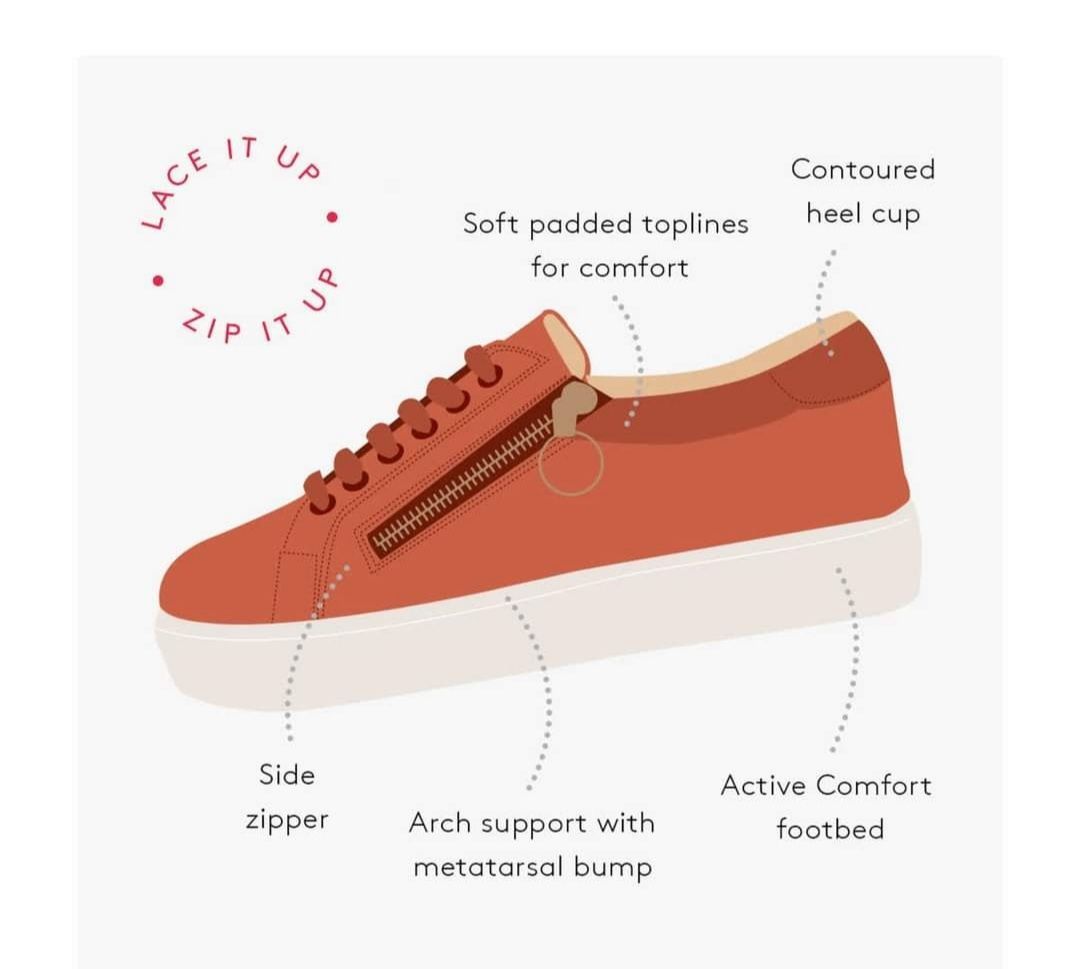
by Sarah
•
12 Mar, 2023
There are so many gorgeous, stylish shoes to choose from anytime you walk into a department store. Unfortunately, most of them offer little in the way of arch support. Arch support matters a lot – if you don’t want your feet to hurt, that is. Arch support isn’t just important for people who have high arches, either. People who have flat feet or fallen arches also need arch support to make up for the structural support that their feet lack. If you have high arches, you also need shoes that have arch support so that your natural arches don’t get overly strained. Arch support gives your feet the cushioning and support that they need while evenly distributing your body weight. This means that you will experience less pain after spending time on your feet, whether you are going to work, doing errands around town, or running for exercise. Although finding shoes with sufficient arch support can be difficult, it isn’t impossible. Check out this guide to help you choose ladies shoes with arch support. Determine what type of foot structure and gait you have. If you have high arches, you can probably tell by looking at your feet. Is there a high curve in the bottom of your foot? You can also tell by looking at your footprint. If you can only see toes and heel with very little outline in the middle, then you probably have high arches. If you can see the entire shape of your foot, then your feet are probably flatter. You can identify your gait by looking at the pattern of wear on your shoes. If your shoes are more worn on the outside edges, then you probably supinate. For a professional assessment, visit a custom shoe shop where they can perform gait analysis. Do you need comfortable dress shoes? When it comes to dress shoes, people who need extra arch support often find that a low heel is more comfortable for them than a completely flat shoe. Ziera is a good brand for providing a dressy shoe that also has plenty of arch support. Most sandals don’t offer much in the way of arch support. However, the options have improved in recent years. Ziera offers some great sandals that are comfy, attractive, and have plenty of arch support. You can also protect your arches by taking good care of your body. Try to maintain a healthy weight; excess weight puts extra pressure on the arches of the feet. Regular exercise keeps the entire body healthy. Make sure that you are wearing the right size shoes. Have your feet measured at a custom shoe shop every time you purchase new shoes. Feet do change size over time, and you may not be wearing the size that you need.
STAY IN THE LOOP
Subscribe to our newsletter to receive £10 off your next order, as well as updates on new styles, sales & exclusives.
Newsletter Signup
Thank you for contacting us.
We will get back to you as soon as possible.
We will get back to you as soon as possible.
Oops, there was an error sending your message.
Please try again later.
Please try again later.
CUSTOMER SERVICE
LOCATION
HQ
Pontypridd, Wales
© 2024
All Rights Reserved | Ziera Shoes UK | Privacy | Login | Sitemap | Web Design by Website Sorted


